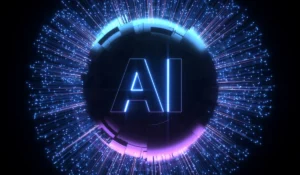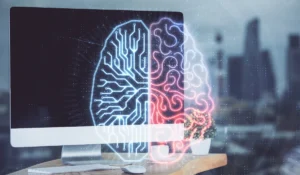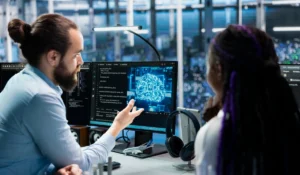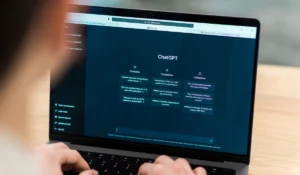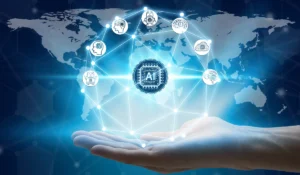The latest AI industry news April 2025 highlights a month of remarkable advancements, strategic investments, and policy developments. Artificial intelligence is evolving faster than ever. OpenAI launched GPT-4.1, while tech giants made major infrastructure investments.
This article explores the key events and breakthroughs that defined the AI industry in April 2025. You will also learn about the technologies, companies, and initiatives driving global AI innovation.
Major AI Breakthroughs in AI Industry News April 2025
April 2025 witnessed several major AI breakthroughs that are reshaping the technology landscape. Notably, OpenAI released GPT-4.1, a powerful language model capable of handling up to 1 million tokens, delivering superior performance in coding, natural language understanding, and data analysis.
Similarly, Google introduced Gemini 2.5, which features advanced multimodal capabilities and an expanded context window, allowing more complex and nuanced AI interactions.
These breakthroughs highlight rapid AI innovation. They also show how AI is being integrated into industries like education and robotics. Consequently, businesses and developers worldwide are exploring new applications to leverage these advancements, making April 2025 a landmark month for AI progress.
OpenAI’s GPT-4.1 Innovations in April 2025 AI Industry News
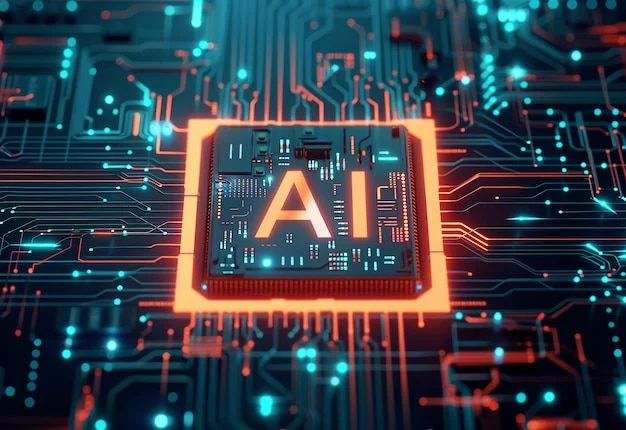
On April 14, OpenAI introduced GPT-4.1, an advanced language model surpassing its predecessors in performance and efficiency. With the ability to handle up to 1 million tokens, GPT-4.1 offers enhanced instruction-following, coding, and data analysis capabilities.
Enterprises are already exploring GPT-4.1 for automating complex tasks and gaining actionable insights from large datasets (launchconsulting.com).
Google Gemini 2.5 Advancements: AI Industry News April 2025
Similarly, Google’s Gemini 2.5 model made headlines in April, featuring a massive context window of 1 million tokens and plans for expansion. This advancement allows better handling of big datasets and multimodal inputs, positioning Gemini 2.5 as a strong competitor in the AI space (ptechpartners.com).
Strategic Investments in AI Infrastructure: AI Industry News April 2025
April 2025 highlighted significant strategic investments in AI infrastructure, signaling strong confidence in the technology’s future. Nvidia made headlines by announcing a $100 billion investment in OpenAI, aiming to expand AI data centers and support the growing computational demands of advanced models like GPT-4.1.
In addition, Microsoft continued its pivotal role in AI development with a $100 billion equity stake in OpenAI’s for-profit division, while the nonprofit governance structure ensures ethical oversight. These strategic investments not only accelerate the development of cutting-edge AI models but also strengthen the global AI ecosystem, enabling enterprises to adopt AI solutions more efficiently.
As a result, infrastructure enhancements are setting the stage for broader AI adoption across industries, from finance and education to robotics and healthcare.
Nvidia’s $100 Billion Investment: AI Industry News April 2025
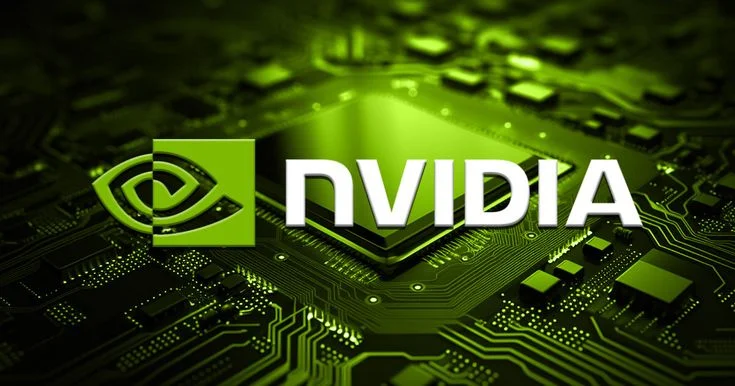
Nvidia announced a $100 billion investment in OpenAI to support ChatGPT and other AI models. They will build 10 gigawatts of AI data centers, with the first operational by late 2026. (reuters.com). This demonstrates Nvidia’s commitment to meeting the rapidly growing demand for AI computing power.
Microsoft’s Ongoing Support
Microsoft continues to play a pivotal role in AI development, holding a $100 billion equity stake in OpenAI’s for-profit division. Despite this significant investment, OpenAI remains under the governance of its nonprofit board, ensuring a balance between innovation and ethical considerations (apnews.com).
Global Policy Developments
April 2025 saw crucial global policy developments to regulate the rapid growth of artificial intelligence. Over 200 international leaders, including former heads of state and Nobel laureates, signed the “Global Call for AI Red Lines.” They urged nations to set safety limits on AI development by the end of 2026.
The initiative aims to prevent high-risk practices, such as self-replication and impersonation. Meanwhile, the UK’s Bank of England highlighted AI’s potential to improve financial oversight. It also helps detect risks more effectively.
Consequently, these developments show a growing global consensus. While AI offers immense opportunities, responsible governance is essential for safe and ethical adoption across industries.
Calls for International AI Regulation
In April, over 200 global leaders, including former heads of state and Nobel laureates, signed the “Global Call for AI Red Lines.” This initiative urges nations to set international limits on AI development by the end of 2026, aiming to prevent unsafe practices like impersonation or self-replication (theverge.com).
UK Bank of England’s Stance on AI in Finance
Bank of England Governor Andrew Bailey emphasized AI’s role in improving regulatory oversight. He noted that regulators often fail to utilize the vast amounts of collected data, potentially missing critical warning signs of financial misconduct (reuters.com).
Industry Trends and Applications
In April 2025, industry trends showed AI’s transformative potential across many sectors. In education, AI tools are increasingly adopted to enhance productivity, provide personalized learning experiences, and support educators in managing administrative tasks more efficiently.
Meanwhile, the robotics industry is seeing notable progress through initiatives like South Korea’s K-Humanoid Alliance, which promotes collaboration between government, academia, and private companies to advance humanoid robot research and development. Businesses in finance, healthcare, and logistics use AI to optimize operations. They also reduce costs and improve decision-making.
Consequently, these trends demonstrate that AI is not just a technological innovation but a strategic enabler, driving efficiency, creativity, and competitive advantage across multiple industries.
AI in Education

The education sector is increasingly adopting AI to improve productivity and confidence among staff and students. Schools and universities are exploring tools designed to automate administrative tasks, enhance learning outcomes, and provide personalized support (nationalcentreforai.jiscinvolve.org).
AI in Robotics: The K-Humanoid Alliance
April also saw the launch of South Korea’s K-Humanoid Alliance, a government-academic-industry partnership advancing humanoid robot research. This initiative demonstrates growing investment in robotics as a key AI application .
Conclusion
April 2025 was a transformative month for the AI industry, marked by technological breakthroughs, major investments, and international policy initiatives.
Furthermore, as AI continues to advance, these developments set the stage for a future where artificial intelligence becomes an integral part of multiple industries. For instance, creative fields are already leveraging AI software for graphic design to streamline workflows and enhance innovation (learn more here).
Therefore, staying updated on these changes is essential for businesses and individuals who want to effectively navigate the rapidly evolving AI landscape. In addition, these advancements provide opportunities to innovate, adapt, and remain competitive in a technology-driven world.
FAQs
GPT-4.1 is OpenAI’s latest language model. It offers improved performance, efficiency, and can handle up to 1 million tokens. The model is designed for complex tasks like coding, natural language understanding, and large-scale data analysis.
How is Nvidia Supporting AI Development?
Nvidia is supporting AI development through a $100 billion investment in OpenAI. This investment includes building AI data centers for large-scale computation. It accelerates AI model development and strengthens global AI infrastructure.
What is the Global Call for AI Red Lines?
The Global Call for AI Red Lines is led by over 200 international leaders. It urges nations to set limits on AI development by 2026. The initiative aims to ensure safe and ethical practices. It also prevents high-risk AI applications.






